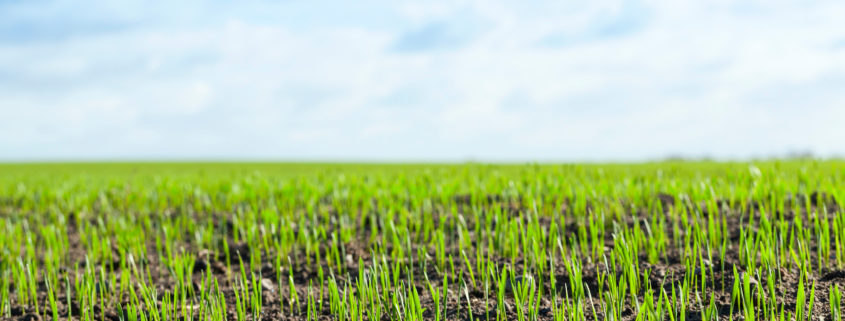IP crop report
Note: This is a new, monthly feature from SSGA’s agronomy action team, highlighting growing conditions from different regions around the country. To contribute or for more information, please email us at dkee@agmgmtsolutions.com.
Michigan
The past two weeks have been abnormally warm in many parts of Michigan. This fact, combined with drier–than–normal soil conditions, has allowed some farmers to get a start on planting soybeans. Most growers who have planted soybeans have been planting small fields or small areas as their confidence in the weather for the next 30 days can be described as cautious. One weather station in southern Michigan has reported soil temperatures above 50 degrees (at 2-inch depth) for 16 of the past 18 days, while other stations in central Michigan have reported three to five days above 50 degrees with most of those occurring after April 6. Because of good planting conditions and warm soil, germination and shoot elongation have been progressing in early planted fields.
The planted soybeans are the exception as the vast majority of the expected 2.25 million acres to be grown in Michigan are not planted. There is a lot of activity in farm equipment preparation, seed delivery, fertilizer applications and some early tillage, as weather and field conditions have allowed. There is a general optimism among growers and the field crops industry to start this growing season.
Minnesota
Minnesota is dry, as 85% of the state is rated abnormally dry (D0) to severe drought (D2). A small section (0.11%) of the state in the northwest corner (Kittson County) is rated extreme drought (D3). Drought appears more severe in western Minnesota, compared to the east side of the state. The dry conditions are allowing growers’ time to finish manure applications and complete tillage operations. Soil temperatures (4–inch depth) are increasing with highs ranging in the upper 30s for Crookston to the lower 60s at Waseca. Mid- to late last week (April 7-10,) 0.5 to 2.0 inches of rain was reported by farmers, with snow in the forecast for the northwestern portion of the state. Farmers are still cautiously optimistic for an early planting season; several have started planting small grains.
Missouri
Two weeks in February brought a harsher–than–normal winter in Missouri, averaging 20 degrees below normal, which equated to a state temperature average of 10.2 degrees, according to the Missouri Climate Center. Missouri finally experienced some above–normal temperatures in early April, and corn planting got off to a good start. Soft red winter wheat planting last fall was up considerably from the previous year – 650,000 acres, compared to 480,000 acres. The wheat crop survived the extreme winter cold temperatures very well, as there was adequate snow cover during the coldest periods. The largest areas of wheat in Missouri are in the southeast, southwest and central portions of the state. Wheat is generally in good condition, with no particular disease concerns at this time.
The USDA has Missouri predicted for 3.4 million acres of corn and 5.8 million acres of soybeans. The USDA projection is steady for both major crops in Missouri. Soybean planting for 2021 will be underway soon. Many producers across the state are planting an earlier soybean crop, which is trending to what we’re seeing across the Midwest.







Leave a Reply
Want to join the discussion?Feel free to contribute!